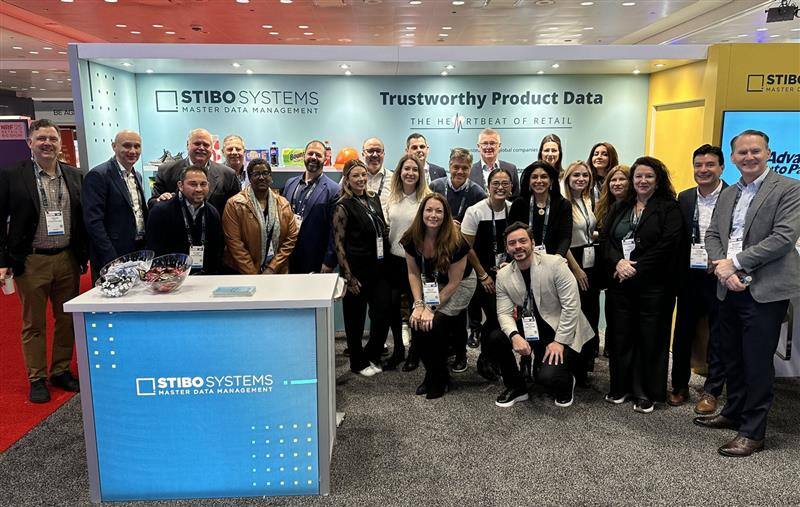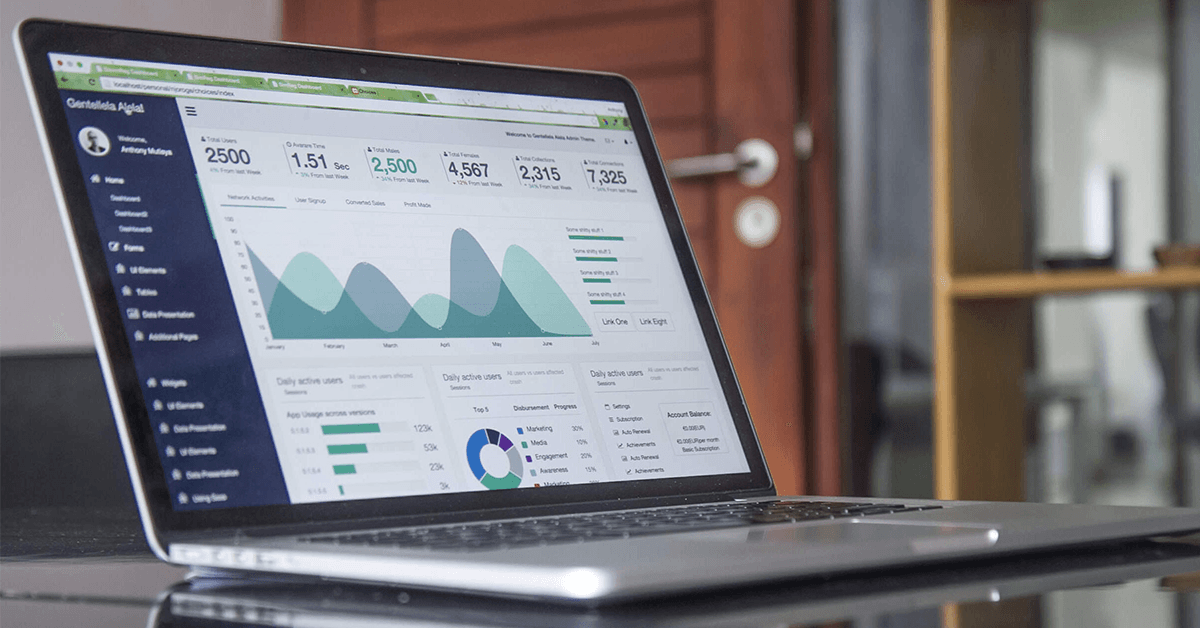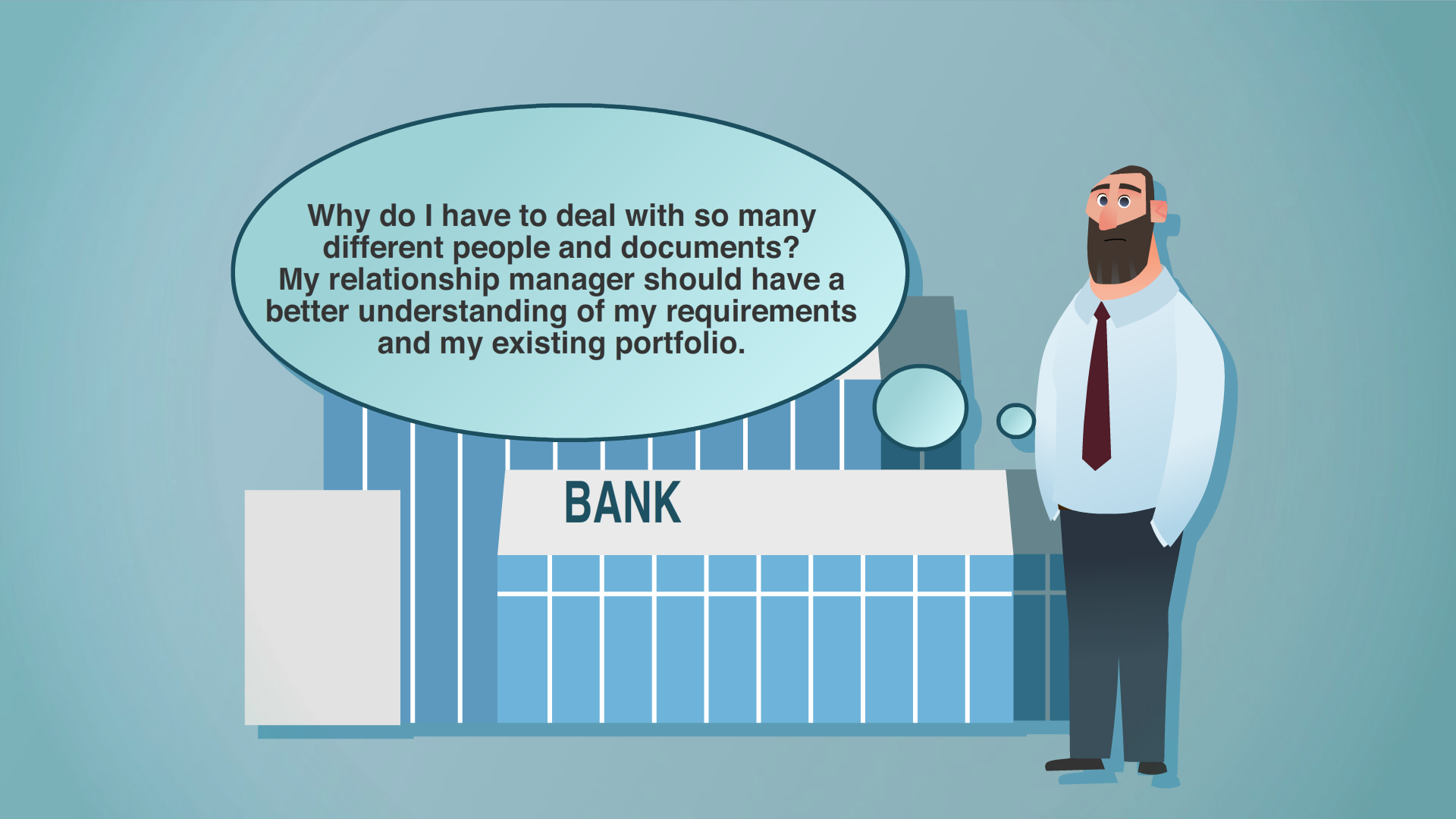Microsoft Fabric has created a buzz in the retail world with its impressive ability to drive analytics and AI initiatives at scale. But by simply implementing it, you won’t magically solve your data challenges or deliver game-changing insights.
Every single AI initiative entirely depends on the quality of data you feed into it.
Even the most sophisticated AI models can't extract meaningful insights from incomplete, inconsistent or inaccurate information.
Many retailers discover this disconnect only after significant investment. They've put the platform in place but simply don't get those expected revolutionary AI insights. And it almost always traces back to one root cause: the underlying data isn't ready for AI consumption.
In this post, we'll walk you through what it takes to prepare your retail data properly so Microsoft Fabric can truly deliver on its potential.
We’ll cover:
- What Microsoft Fabric brings to retail
- Common data challenges that limit retail AI success
- How to make your retail data “AI-ready”
- How Microsoft Fabric uses your AI-ready data
- How Stibo Systems’ solutions work with Microsoft Fabric to make your data AI-ready
First: What Microsoft Fabric brings to retail
Microsoft Fabric is Microsoft's unified analytics platform. In a single environment, you get:
- Data engineering
- Analytics
- AI capabilities
In other words: You don't need to piece together multiple services. You get a seamless experience where your retail data can flow through different analytical processes without constantly being moved between systems.
As a retailer, you get several valuable capabilities that can completely transform how you use data.
- Real-time analytics processes live data from your stores and websites, letting you see what's happening as it occurs.
- Data warehouse functions pull together information from all your systems in one place, making it easier to analyze everything together.
- AI models running Fabric can analyze shopping patterns, predict demand and help optimize inventory levels when they have good data to work with.
- Built-in Power BI connection lets you create visual reports that help store managers, buyers and executives understand complex information quickly.
Functionalities like that can bridge the gaps between your store data, online sales, supply chain records and customer information. If you’ve been in the retail game for a while, you'll know that those areas are often disconnected.
You can already do amazing things with AI, and more functionalities are being added with incredible speed, but as I alluded to at the beginning of this blog post: The conditions for AI must be right. You really need to have your data in order, or you can’t trust AI's output. So, let’s look at what is likely keeping you from achieving that.
Common data challenges that limit retail AI success
Retail data gets messy fast. You're collecting information from numerous touchpoints – physical stores, e-commerce platforms, mobile apps, social media, loyalty programs and more.
Each system often speaks its own language and organizes data in its own way.

The product data nightmare
Product data inconsistency is particularly problematic. A single item might be described differently across your e-commerce site, inventory management system and in-store POS. One system calls it a "Women's Blue Cotton Sweater Size M," while another records it as "W Sweater BL MED."
AI can work with these variations, but the inconsistencies lead to accuracy issues that undermine the reliability of recommendations, forecasting and other AI-driven insights.
Fragmented customer views
Customer data suffers from similar fragmentation. A shopper's in-store purchase history sits in one system, their online browsing behavior in another and their service interactions in a third.
Identifiers often don't match across systems:
- Loyalty program uses email addresses
- E-commerce platform uses usernames
- In-store POS captures phone numbers
- Mobile app creates yet another unique ID
Without connecting these dots, AI can't deliver the personalized experiences your customers expect.
The constantly shifting landscape
Then there's the time dimension. Seasonal merchandise changes, price adjustments, promotions and evolving product attributes create a constantly shifting landscape. Historical data becomes less valuable if you can't maintain consistency in how products are categorized and described over time.
Complex supply chains
Supply chain data adds even more complexity, with information flowing from:
- Vendors and manufacturers
- Distribution centers
- Logistics partners
- Stores and fulfillment centers
Each link in the chain may use different formats, update frequencies and levels of detail.
How these challenges mess up your AI results
All these data challenges directly impact what you can achieve:
- AI models struggle to identify meaningful patterns across disconnected systems
- Predictive analytics suffer from low accuracy due to incomplete or inconsistent inputs
- Customer insights are fragmented, so you don’t get that unified view needed for true personalization
The good news is that these challenges can be overcome with the right approach to data preparation and management.
The effort you invest in building a solid data foundation will directly determine how much value you get from Microsoft Fabric.
How to make your retail data "AI-ready"
An AI-ready data foundation isn't just clean data. It's thoughtfully structured, consistently maintained and purposefully connected information that spans your whole retail operation.
What makes data "AI-ready" for Microsoft Fabric
AI-readiness starts with consistency.
When product descriptions, customer identifiers, inventory counts and pricing information follow standardized formats across all systems, Microsoft Fabric can interpret and analyze this data.
Without this consistency, AI models spend more time reconciling conflicting information than generating valuable insights.

Consistency: Standardized formats and values across all systems.
Completeness: No critical gaps in product attributes, customer profiles or inventory histories
Timeliness: Continuous updates that reflect the real-time nature of your retail operations
The better your data reflects these elements, the more effectively Microsoft Fabric can transform your data into real insights – that you can trust and act upon.
The building blocks of a strong retail data foundation
1. Single view of product data across all channels
The cornerstone of retail AI success is unified product information. You need a single, trusted source of product data that feeds all your systems.
When you have that, Microsoft Fabric can give you:
- Accurate tracking of product performance across channels
- Identification of cross-selling opportunities based on complete purchase patterns
- Recognition of seasonal trends at specific product levels
- Pricing optimization, based on complete product characteristics
Many retailers achieve this unified product view through Product Information Management (PIM) or product master data management systems that establish governance processes for product data.
2. Customer data unification and quality
Just like your product information does, your customer data needs consolidation across all touchpoints.
Key components of unified customer profiles:
- Identity information (with proper privacy controls)
- Purchase history across online and offline channels
- Browsing and engagement behaviors
- Service interactions and communication preferences
- Loyalty program participation
When you have unified your customer profiles, Microsoft Fabric can deliver genuinely personalized insights.
AI models can gear up and identify patterns in customer behavior that would be impossible to detect with fragmented data.
Example: AI might recognize that customers who purchase certain products online tend to return to stores for related accessories. If your online and in-store data are separate, those types of patterns are invisible to the AI.
3. Supply chain data integration
Retail AI is about much more than customer-facing operations. It is also about supply chain optimization.
Distribution centres, transportation systems, stores and direct-to-consumer fulfilment create a web of inventory movement. It can be hard to optimize these movements without integrated data.
But when this information flows seamlessly into Microsoft Fabric, AI can:
- Identify inefficiencies in your distribution network
- Predict potential disruptions before they impact availability
- Suggest optimal inventory positioning across locations
- Balance cost control with product availability
When your product data connects clearly to your supplier information, AI can help you find correlations between supplier characteristics and product performance.
How data quality directly makes or breaks your AI ambitions
Different AI applications depend on specific data quality dimensions.

Accuracy → Forecasting reliability
When AI models running on Microsoft Fabric attempt to predict future demand, even small errors in historical sales data can lead to huge misalignments in ordering recommendations.
Completeness → Personalization sophistication
For AI to deliver customer recommendations, it needs solid data on product attributes and customer preferences. The more complete these attributes, the more nuanced the personalization.
Timeliness → Operational responsiveness
When AI models running on Microsoft Fabric have access to accurate, real-time inventory data, they can make dynamic fulfillment decisions, but only when inventory changes are captured and processed quickly.
Relationships → Contextual understanding
When AI can see that a customer who bought a specific product also browsed certain categories, viewed particular content and responded to specific promotions, it can spot patterns your human analysts might miss.
These rich contextual relationships also power AI agents that act as personal shopping assistants. They can have natural conversations with customers, understand their needs and guide them to the right products based on their complete history and preferences.
As you can see, it pays to focus on all these quality dimensions across your product, customer and supply chain data.
You're creating one big, beautiful foundation that lets you squeeze every drop of value out of Microsoft Fabric's AI capabilities.
How Microsoft Fabric uses your AI-ready data
Your data's journey looks something like this:
Retail data, which is now consistent, complete and current – or AI-ready – enters Microsoft Fabric's ecosystem through fine-tuned integration pathways.
- Product information
- Customer profiles
- Transaction records
- Inventory data
...it all flows into Fabric's unified environment, where it becomes immediately available for analysis.
This consolidation happens in Fabric's data lake, creating a central repository. What used to be siloed information, now exists in harmony. What makes this particularly powerful is that all your retail data types remain connected through the relationships you've established in your data foundation work.
The magic begins when this prepared data moves through Fabric's various processing engines:
- Data factory transforms your raw retail data into structured formats optimized for analysis
- Data engineering applies advanced processing to enrich information with additional context
- Data warehouse organizes everything into logical models that align with your business processes
- Real-time analytics continuously processes incoming data for immediate insights
- Power BI visualizes patterns and trends in intuitive dashboards
Your carefully prepared data moves through all these components without the friction you usually see when systems can't reconcile conflicting information.
How Microsoft Fabric turns quality data into retail intelligence
When your retail data is AI-ready, AI models running on Microsoft Fabric can generate insights that directly impact your bottom line.
Precise forecasting
AI forecasting models running on Fabric to analyze your unified product, inventory and sales data alongside external factors like seasonality, promotions – even weather patterns.
The result: demand predictions that help reduce both stockouts and excess inventory.
The difference between effective forecasting and mediocre results comes down to your data quality. With incomplete or inconsistent data, even the most sophisticated AI models give you unreliable predictions.
With high-quality, unified data, you get:
- More accurate demand planning across channels
- Better allocation of inventory across distribution networks
- Smarter replenishment schedules based on true demand patterns
- Early identification of shifting consumer preferences
(Truly) personalized customer experiences
When you're feeding Microsoft Fabric unified customer profiles, "personalization" means much more than basic "recommended for you" suggestions.
You can now create truly contextual experiences.
Fabric analyzes complete customer journeys – connecting online browsing, in-store purchases, service interactions and loyalty engagement – to spot subtle patterns in customer behavior. As a retailer, these insights can be pure gold:
- Targeted promotions based on genuine customer preferences, not broad demographics
- Customized digital experiences for different customer segments
- The ability to anticipate customer needs based on past behavior patterns
- Finding at-risk customers before they churn
The foundation all these capabilities rest upon is having a complete, accurate view of each customer across all touchpoints. For that, you need proper master data management.
Optimized supply chains
When you feed it complete, real-time data, AI models on Microsoft Fabric make supply chain management predictive instead of reactive.
The platform continuously analyzes inventory movement, supplier performance, transportation costs and fulfillment patterns, spotting opportunities for improvement across your network.
Combine clean, consistent supplier data with accurate product information, and you will be able to:
- Improve inventory positioning based on actual demand patterns
- Get early warnings of potential supply disruptions
- Spot inefficiencies in distribution routes
- See correlations between supplier performance and product quality
How Stibo Systems’ solutions work with Microsoft Fabric to make your data AI-ready
Getting your retail data ready for AI isn't just about having clean data. You need systems that understand retail complexity and can feed that data into AI platforms properly.
At Stibo Systems, we’ve built our MDM platform—and its domain-specific solutions—to support a wide range of industries, including Retail. And now it connects directly with Microsoft Fabric to help retailers overcome their most common data challenges:
Getting quality data into AI systems that can actually use it.
Two parts that work together
Our approach tackles this in two steps:
1. Fix your data foundation first
Our MDM solutions pull together all your product, customer and supplier data from wherever it lives now. You get proper governance so people can't mess up your data quality, plus automated workflows that handle the repetitive stuff your teams hate doing.
2. Then scale your AI properly
Once your clean data flows from our MDM into Microsoft Fabric, your AI projects stop failing. You can build personalization engines, demand forecasting and risk management tools that your business can trust and use.
Connecting your scattered data sources
Most retailers have the same problem: product data in one system, customer data in another, supplier information somewhere else and location data in yet another place. Each system talks differently and stores things its own way.
Stibo Systems’ solutions connect to your existing systems and pulls everything into one place where it makes sense. Then we push that unified data straight into Microsoft Fabric through direct integration – no complicated data pipelines or custom code needed.
Your data flows from our MDM into Microsoft Fabric’s ecosystem, landing in OneLake. All of Microsoft's tools can immediately work with your retail data without you having to rebuild anything.
Multiple data domains, one approach
We handle the four main areas that trip up retail AI projects:

- Product data arrives at Fabric as a single, complete view that our MDM has already unified and standardized. Fabric gets all product attributes, relationships and hierarchies properly organized – no conflicting information or missing details to sort through.
- Customer data flows to Fabric as unified profiles that our MDM has connected across all touchpoints. Fabric sees complete customer journeys instead of having to piece together fragments from different systems.
- Supplier data reaches Fabric as clean, consistent supplier information that our MDM has already consolidated and validated. Fabric gets everything it needs for supply chain optimization without having to reconcile conflicting supplier records.
- Location data comes to Fabric standardized and unified by our MDM across all your facilities – stores, warehouses, distribution centers. Fabric gets the geographic context it needs for inventory and fulfillment decisions from one authoritative source.
Each area feeds clean, consistent data to Microsoft Fabric, so your AI models work with complete information instead of fragments.
Conclusion
Microsoft Fabric comes with incredible AI potential for you as a retailer, but it's not a magic solution. The foundation of your success lies in the quality of your data.
Without consistent, complete and connected information across your product catalog, customer profiles and supply chain, even the most sophisticated AI models will struggle to give you reliable insights.
Master data management provides that essential foundation.
By unifying fragmented systems, enforcing data quality standards and creating clear relationships between different data domains, you give Microsoft Fabric the high-quality inputs it needs to generate truly transformative outputs.
The retailers who thrive with AI aren't necessarily those with the biggest technology budgets. They're the ones who recognized early that data readiness is the prerequisite for AI success
Get the Full Benefits of AI, from Trustworthy Retail Data
Solve your retail data problems and build a foundation for AI with Stibo Systems and Microsoft.



































































































































































































